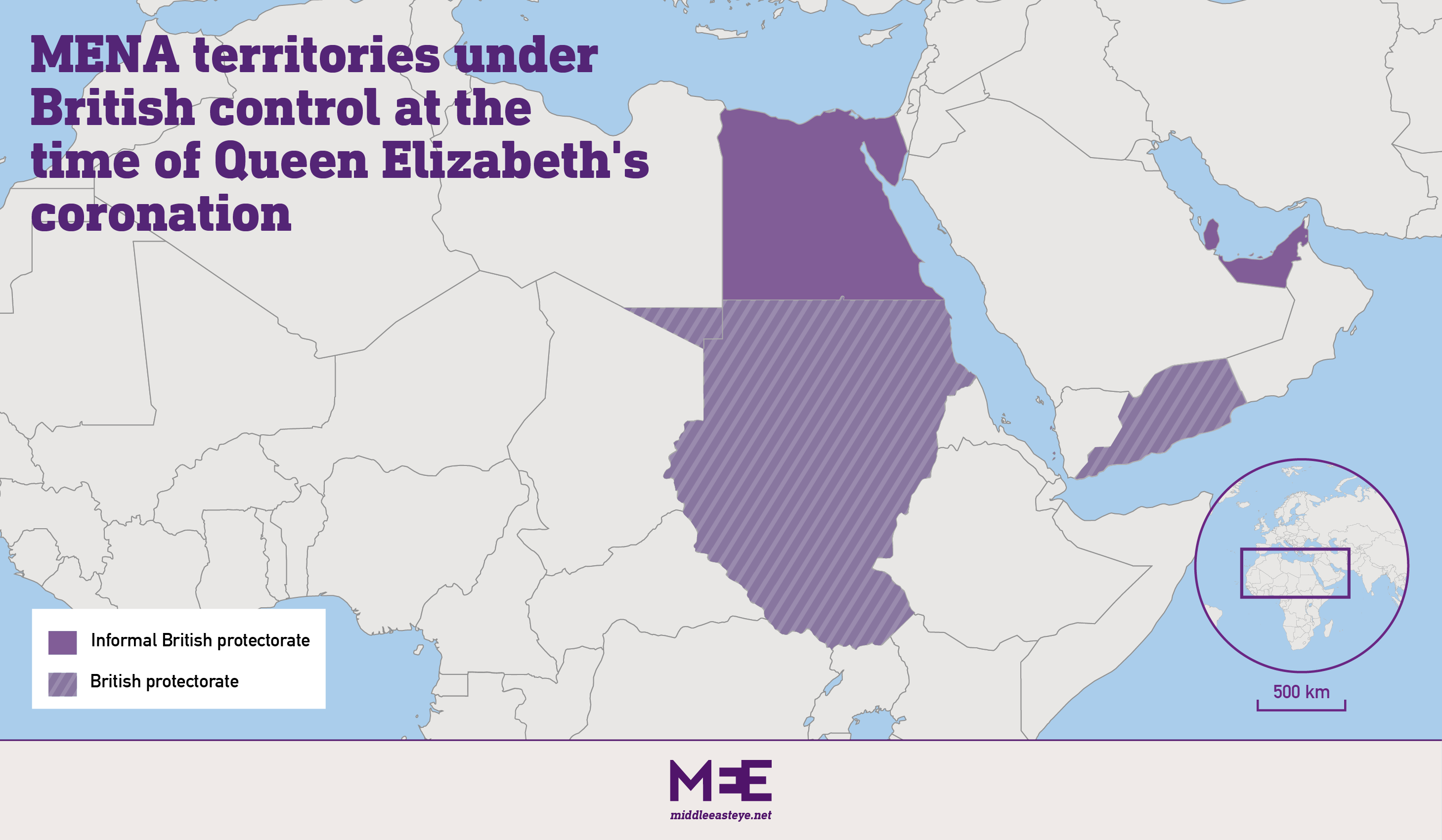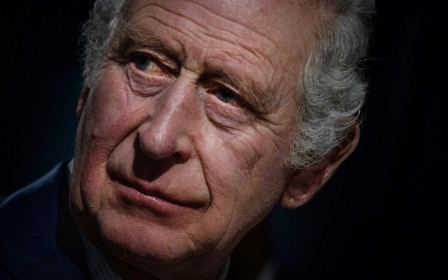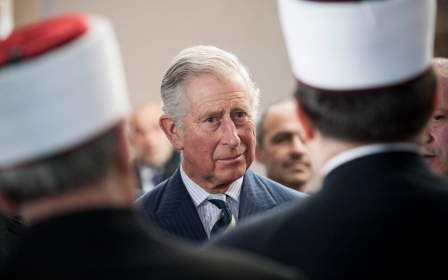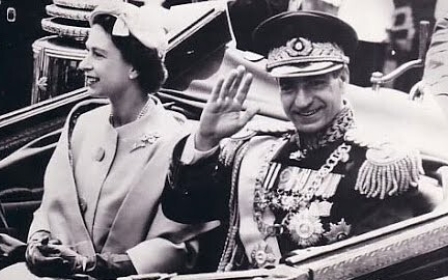Which Middle East rulers were at Elizabeth II’s coronation in 1953?

King Charles III’s coronation on Saturday will be attended by several leaders and royals from the Middle East and North Africa - a region in which Britain has a long and chequered history as a former colonial power.
King Abdullah of Jordan and his wife Queen Rania have already set off for the UK ahead of their attendance.
Also likely to attend, according to The Times, are Dubai Emir Mohammed bin Rashid al-Maktoum, Qatari Emir Tamim bin Hamad Al Thani, King Mohamed VI of Morocco, and Omani Sultan Haitham bin Tarik.
The last time a British monarch was crowned, 70 years ago, the political make-up of the Middle East was very different.
Queen Elizabeth II's coronation on 2 June 1953 came at a time Britain still had a sprawling empire, wielding direct and indirect control over vast swathes of the world, including in the Middle East.
New MEE newsletter: Jerusalem Dispatch
Sign up to get the latest insights and analysis on Israel-Palestine, alongside Turkey Unpacked and other MEE newsletters
Those who attended the late queen's crowning included royals whose descendants still rule today, but also representatives of now-defunct British protectorates and overthrown monarchs.
One of the Arab attendees of the lavish ceremony went on to be mutilated, dragged through the streets and dumped in a river just five years later. Guests of Charles' coronation this weekend will hope not to suffer the same fate.
Middle East Eye breaks down the region's invitees the last time Britain anointed a new head of state.
Rulers of British protectorates
Several Middle East attendees of Elizabeth's enthroning, which took place at Westminster Abbey in London, were Gulf rulers of protectorates under the direct rule of Britain.
That included Ahmad bin Ali Al Thani, then prince of British-run Qatar. He was representing his father, who he would go on to succeed as the protectorate's emir in 1960. Ahmed was the first ruler of the independent state of Qatar in 1971 until he was deposed by his cousin the following year.
Salman bin Hamad al-Khalifa, who held the title of Hakim of Bahrain, was also present. The House of Khalifa has ruled the kingdom since 1783, and Salman’s grandson Hamad bin Isa is the current king.
Qatari and Bahraini leaders were joined at Westminster Abbey by Kuwait's then-leader Abdullah al-Salim al-Sabah. He went on to become the country’s first emir after it gained independence from the UK in 1961. The Sabah dynasty has ruled Kuwait since 1752.
Another spectator was Ali III, sultan of Lahej, a former sheikhdom in present-day Yemen.
Lahej was part of the Aden Protectorate, an area of southern Arabia (mostly in Yemen, but also including parts of modern-day Saudi Arabia) run by the British from 1872 until 1963.
Elizabeth II visited south Yemen a year after her coronation during a lengthy tour of the Commonwealth.
Meanwhile, British diplomat Robert George Howe attended the crowning as a representative of Sudan, which at the time was ruled jointly by Britain and Egypt. The African nation gained independence three years later.
Deposed kings
Some of the guests were present on behalf Middle Eastern and North African monarchs who have since been overthrown.
Among them was a royal court representative of Fuad II, the last king of Egypt, who was just one-years old at the time of Elizabeth’s coronation.
Fuad was deposed as monarch just two weeks after the ceremony at Westminster Abbey, and spent most of his life in exile in Europe. Still alive aged 71, Fuad has visited Egypt several times since his citizenship was restored in the 1970s.
A representative of Ahmad bin Yahya, the penultimate king of Yemen was also present, as well as a delegate of Idris of Libya, who was the king of the North African country until being deposed by Muammar Gaddafi in 1969.
Abdallah of Hejaz, then regent of the Hashemite kingdom of Iraq, took his place at the ceremony in the British capital, too. He was representing his young cousin King Faisal II.
Abdallah was killed five years later during Iraq's 14 July Revolution. His body was mutilated and disembowelled, and his corpse dragged across Baghdad, according to an Iraqi ex-royal guard officer.
The corpse was burned, cut up into pieces and thrown into the Tigris river. Faisal II and other family members were also executed.
Government officials
Elsewhere, the future King Fahd of Saudi Arabia was also there, representing his father, known in the West as Ibn Saud.
Ibn Saud, who was the founder of Saudi Arabia and its first king, died five months after Elizabeth's coronation. All of the Saudi monarchs since then, including Fahd, have been his sons.
The kingdom has been closely aligned to Britain ever since its creation, which came about following the British-assisted Arab Revolt, which overthrew the Ottoman Empire in 1916.
A representative of Jordan’s King Hussein was present too. The Hashemite kingdom was also closely aligned with London, having gained independence from the Brits just seven years earlier.
Officials from Lebanon, Turkey, Syria and Israel also witnessed the ceremony.
Five years prior to Elizabeth's crowning, Britain pulled out of Palestine, which it had controlled since 1920, but not before encouraging Jewish immigration and the Zionist movement's plan to settle there - a policy that rocked a region that is still coming to terms with the creation of Israel.
Despite visiting more than 120 countries and travelling around a million miles during her 70 years on the throne, Queen Elizabeth II never visited Israel.
King Charles III visited Jerusalem as Prince of Wales in 2020, when he expressed sympathy for Palestinians and wished them "freedom, justice and equality" in the future.
Middle East Eye delivers independent and unrivalled coverage and analysis of the Middle East, North Africa and beyond. To learn more about republishing this content and the associated fees, please fill out this form. More about MEE can be found here.







